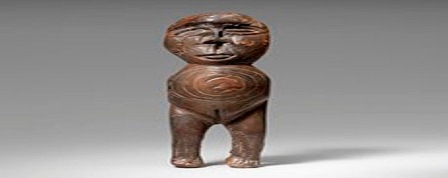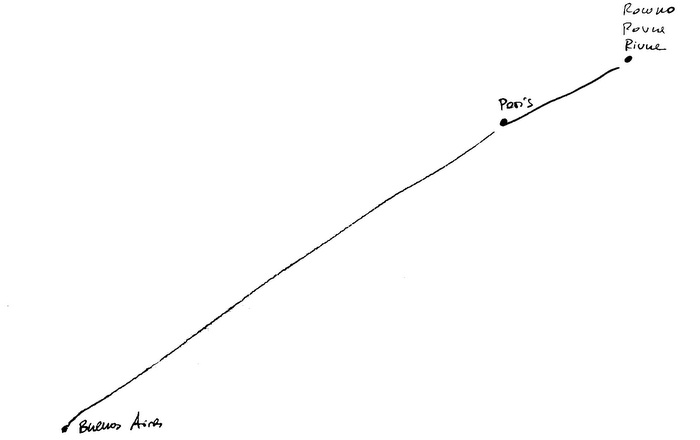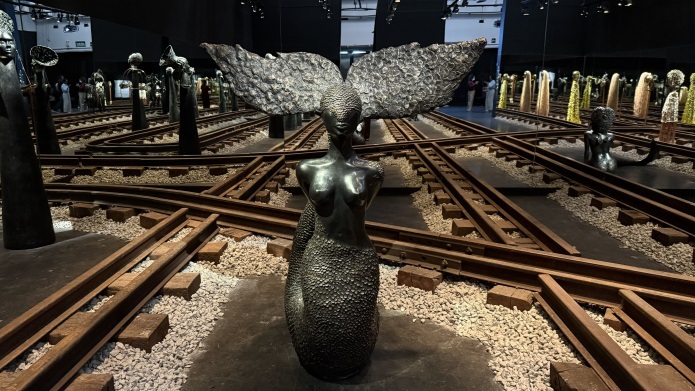Together with his wife, Adelaide de Menil, the late Edmund Carpenter assembled one of the world’s finest and most extensive collections of Old Bering Sea Paleo-Eskimo material culture. MicroCosmos is the first exhibition of this extraordinary body, primarily showcasing artifacts from the Old Bering Sea cultures of coastal Alaska and Siberia, ca. 250 BCE–1000 CE. Curated by Sean Mooney, the exhibition celebrates the spirit of Carpenter’s curiosity and his pursuit of the underlying cultural significances in Paleo-Eskimo expressive culture by exploring the animistic universe expressed in these objects.
Predominantly carved from walrus ivory, the most common material resource in the region, many of the artifacts are manifest in miniature, some only one centimeter tall. Yet their intense diminution allows for powerfully transcendent representations through which the arctic world of intertwined personae comes alive. In the Paleo-Eskimo narrative, humans and animals transform into each other with fluid ease by both spiritual and practical necessity. The finely carved works of art are representations of shamans in flight and mythical beasts in multiple forms. Seals and water fowl possess human heads, pregnant women have walrus tusks. Curious as these manifestations may seem, they demonstrate a collective cultural awareness and integrated naturalism that is astonishing in its accomplishment and virtuosity.
Along with the presentation of Paleo-Eskimo objects, the exhibition includes two late nineteenth-century Yup’ik storytelling dance masks used for cyclical ceremonies. The Yup’ik people of coastal Alaska are genetic descendants of the Old Bering Sea cultures from which many of their masking and dance traditions are believed to have originated over several thousands of years. Many of the dances celebrate seasonal activities, such as hunting or the changing weather, and the masks express characteristic dualities of Yup’ik shamanic metaphors: summer and winter winds; predator and prey; steadfastness and trickery.
Yup’ik peoples often created dance masks in matched oppositional pairs to assist in the narration of the dance, but many of these pairs later became separated. Very few remain united, especially in museum collections. For the first time in nearly a hundred years, the two masks will be reunited in this exhibition at the Menil. One mask represents a wolf, the other a caribou. Perfectly balanced, made by the same carver for the same dance, they are predator and prey, hunter and hunted, inextricable aspects of the same forces upon which arctic life depends, and always has. MicroCosmos is curated by Sean Mooney, Curator of the Edmund Carpenter Collection.
This exhibition is generously supported by the City of Houston.
August 29, 2015 – February 21, 2016
MicroCosmos / Details
from the Carpenter Collection of Arctic Art
The Menil Collection















